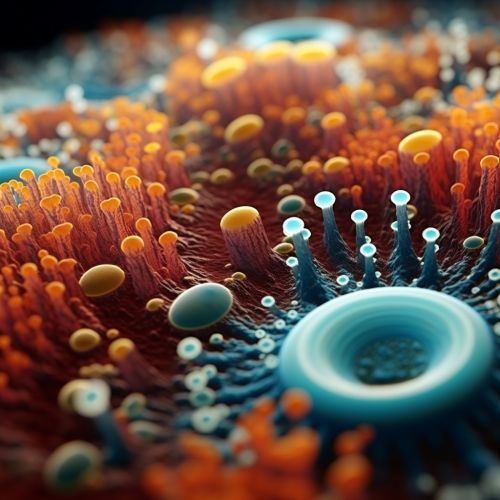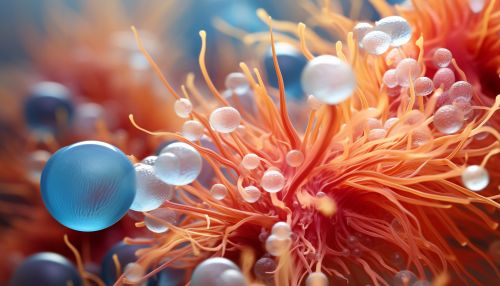Nitrification
Introduction
Nitrification is a critical process in the nitrogen cycle that involves the conversion of ammonia (NH3) into nitrite (NO2−) and then into nitrate (NO3−). This process is performed by two groups of specialized bacteria known as nitrifying bacteria. Nitrifying bacteria are a type of chemolithotrophic organisms that derive energy from the oxidation of inorganic substances.


Nitrifying Bacteria
Nitrifying bacteria are divided into two groups: ammonia-oxidizing bacteria (AOB) and nitrite-oxidizing bacteria (NOB). The AOB, which include members of the genera Nitrosomonas and Nitrosococcus, convert ammonia to nitrite. The NOB, including Nitrobacter and Nitrospira, further oxidize nitrite to nitrate.
Ammonia-Oxidizing Bacteria (AOB)
Ammonia-oxidizing bacteria are the first group of nitrifying bacteria involved in the nitrification process. They oxidize ammonia to nitrite using the enzyme ammonia monooxygenase. This is an energy-yielding process that allows these bacteria to grow. The most well-known AOB are Nitrosomonas and Nitrosococcus.
Nitrosomonas
Nitrosomonas is a genus of ammonia-oxidizing bacteria that play a crucial role in the nitrogen cycle. They are Gram-negative bacteria and are predominantly found in soil, fresh water, and marine environments. Nitrosomonas are chemolithoautotrophs, meaning they derive energy from the oxidation of inorganic compounds and use carbon dioxide as their primary carbon source.
Nitrosococcus
Nitrosococcus is another genus of ammonia-oxidizing bacteria. They are also Gram-negative and are found in marine and saline environments. Nitrosococcus are known for their ability to tolerate high concentrations of ammonia, making them important in environments with high levels of this compound.
Nitrite-Oxidizing Bacteria (NOB)
Nitrite-oxidizing bacteria are the second group of nitrifying bacteria in the nitrification process. They oxidize nitrite to nitrate, a process that also yields energy for growth. The most well-known NOB are Nitrobacter and Nitrospira.
Nitrobacter
Nitrobacter is a genus of nitrite-oxidizing bacteria. They are Gram-negative bacteria and are found in a variety of environments, including soil, fresh water, and marine environments. Nitrobacter are also chemolithoautotrophs and use carbon dioxide as their primary carbon source.
Nitrospira
Nitrospira is another genus of nitrite-oxidizing bacteria. They are also Gram-negative and are found in a wide range of environments, including soil, fresh water, and marine environments. Nitrospira are known for their ability to tolerate high concentrations of nitrite.
Nitrification Process
The nitrification process begins with the oxidation of ammonia to nitrite by AOB. This is a two-step process. First, ammonia is oxidized to hydroxylamine (NH2OH) by the enzyme ammonia monooxygenase. Then, hydroxylamine is further oxidized to nitrite by the enzyme hydroxylamine oxidoreductase.
The nitrite produced is then further oxidized to nitrate by NOB. This is also a two-step process. First, nitrite is oxidized to nitric oxide (NO) by the enzyme nitrite oxidoreductase. Then, nitric oxide is further oxidized to nitrate by the enzyme nitrate oxidoreductase.
Environmental Significance
Nitrification has significant environmental implications. It plays a crucial role in the nitrogen cycle, facilitating the conversion of ammonia, which can be toxic to many organisms, into nitrate, which is a key nutrient for plant growth. However, nitrification can also contribute to environmental problems, such as eutrophication and acid rain.
Role in the Nitrogen Cycle
The nitrogen cycle is a biogeochemical cycle that describes the transformations of nitrogen and nitrogen-containing compounds in nature. Nitrification is a key step in this cycle, converting ammonia, which is produced by the decomposition of organic matter, into nitrate, which can be taken up by plants and used to build proteins and other organic molecules.
Eutrophication
Nitrification can contribute to eutrophication, a process where excess nutrients, particularly nitrogen and phosphorus, in water bodies lead to excessive growth of algae and other aquatic plants. When these organisms die and decompose, they consume oxygen in the water, leading to low oxygen levels that can harm or kill aquatic animals.
Acid Rain
Nitrification also contributes to the production of nitric acid, a component of acid rain. Acid rain can harm forests and other vegetation, acidify lakes and streams, and damage buildings and monuments.
